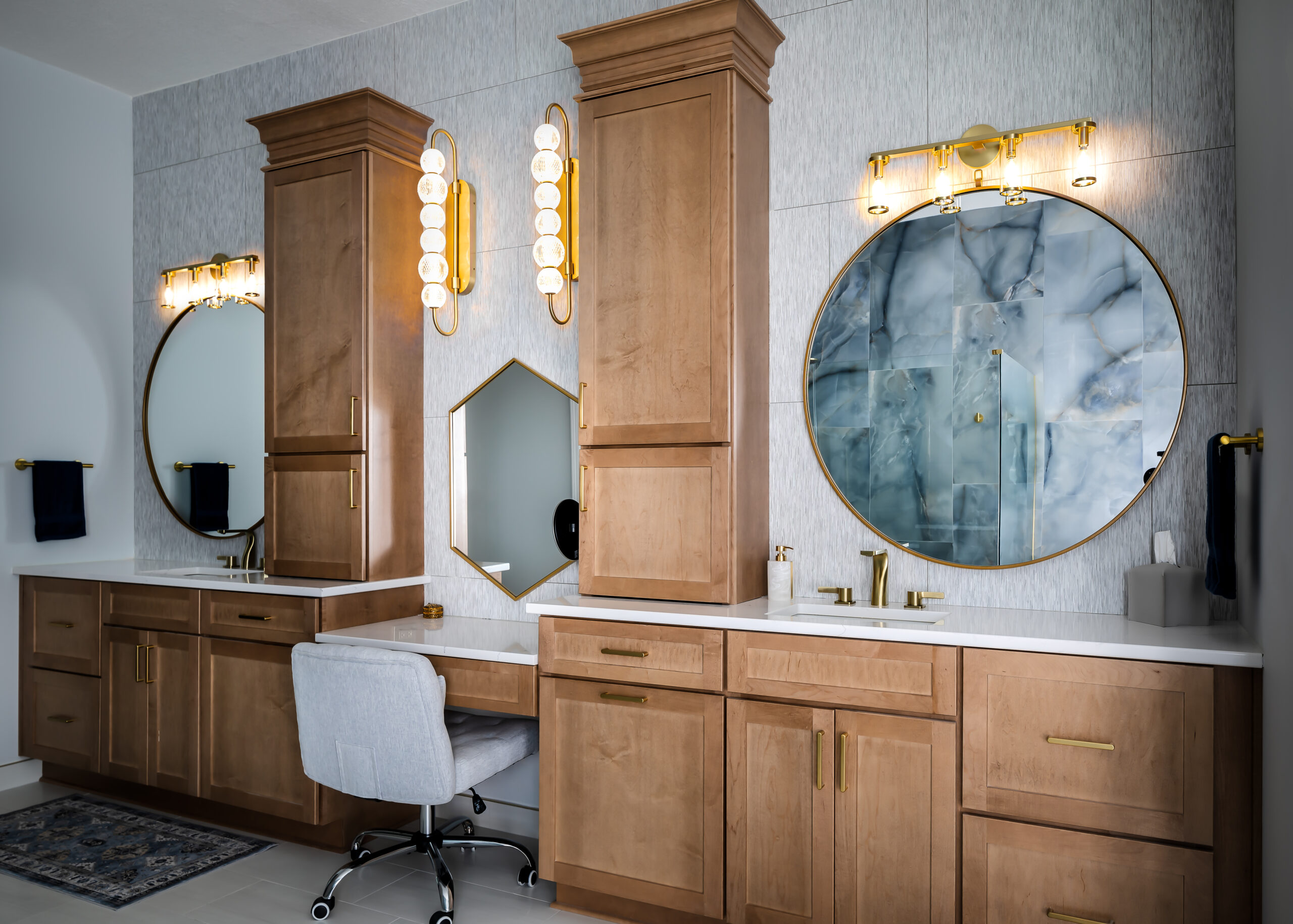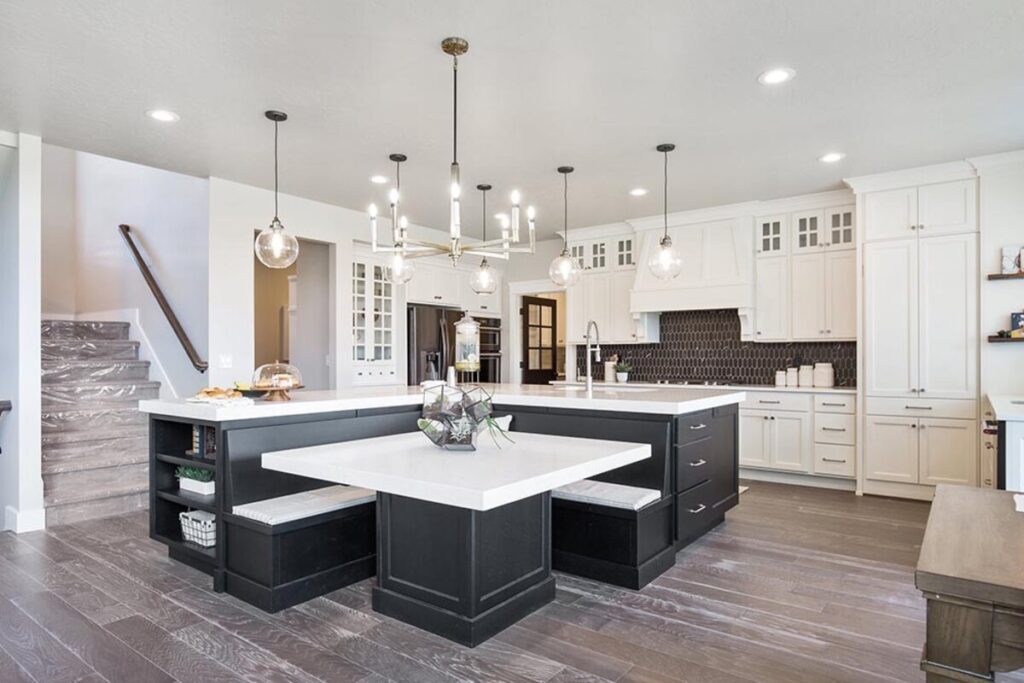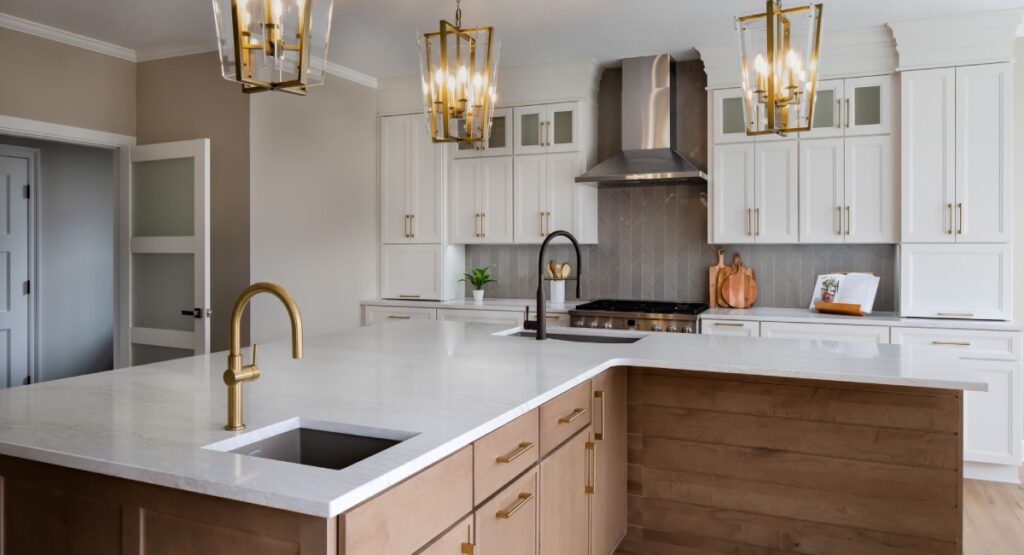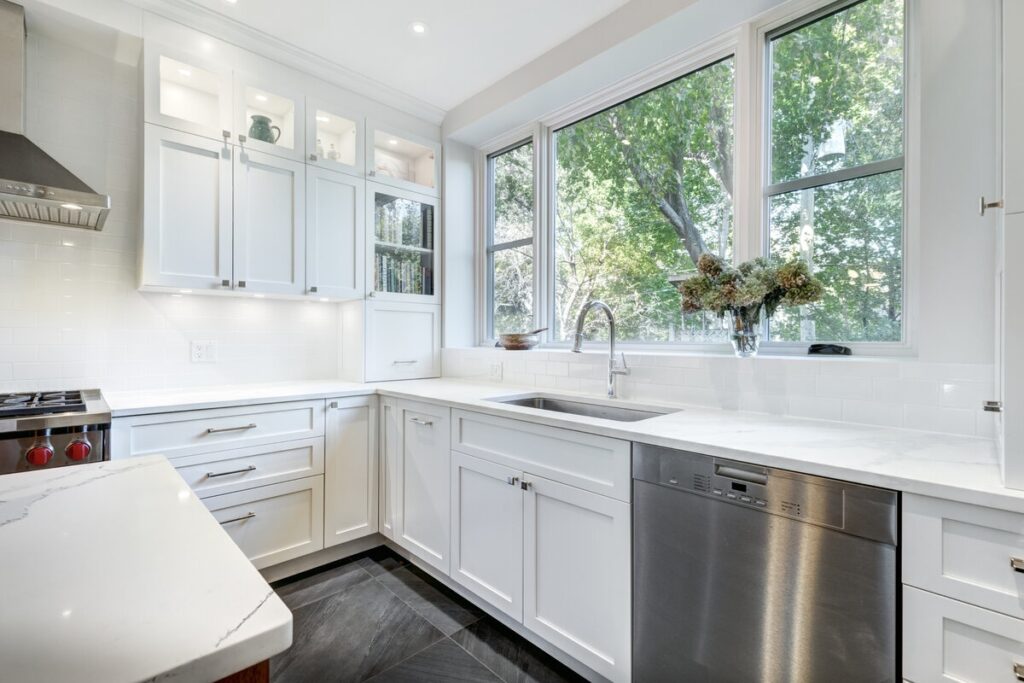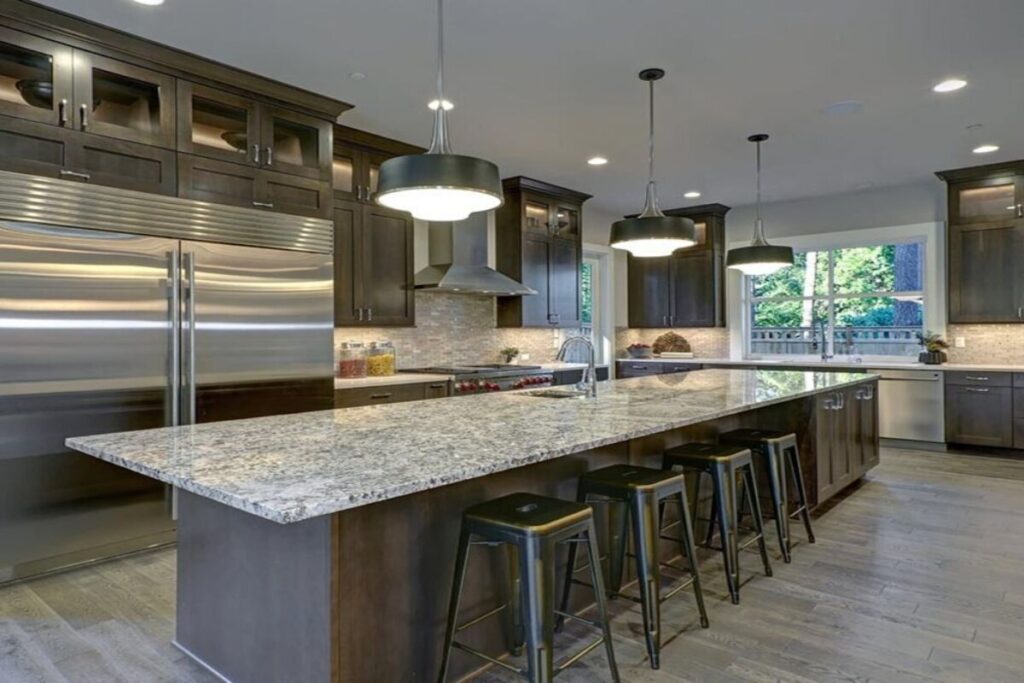Have you ever entered a room and felt an immediate sense of warmth and comfort or, conversely, a harsh and uninviting atmosphere? The culprit behind these contrasting vibes is often the lighting design. Layering light goes beyond the basic overhead fixture, transforming a space into a haven that caters to different moods and functionalities. Our award-winning Kansas City interior design company, Karin Ross Designs, dives into the art of layered lighting, equipping you with the knowledge to create a truly inviting and functional space in your home.
What Is Layering in Lighting?
Layered lighting, or light layering, refers to using several different light sources and types at once in a space. This design technique uses multiple light sources to create a more functional, inviting, and visually appealing environment. Layered lighting goes beyond a single overhead light and instead incorporates different types of lighting to achieve a specific style.
What Are the Three Most Commonly Used Layers of Lighting?
There are three common types of layered lighting:
- Ambient Lighting: Provides general illumination for the entire room. Think overhead fixtures, recessed lighting, or cove lighting.
- Task Lighting: Focuses light on specific areas for activities like reading, cooking, or working at a desk. This could be table lamps, under-cabinet lighting, or pendant lights.
- Accent Lighting: Highlights specific features or creates a mood. This might include wall sconces, track lighting, or strategically placed lamps to showcase artwork or architectural details.
There are many benefits to layering lighting, such as:
- Increased Functionality: Different layers cater to various needs, making the space more adaptable throughout the day.
- Enhanced Ambiance: By adjusting the layers, you can create different moods, from bright and energizing for daytime activities to warm and inviting for evenings.
- Visual Interest: Layering light adds depth and dimension to a space, making it feel more inviting and dynamic.
Overall, light layering is a powerful tool for interior designers and homeowners alike to create a truly functional and aesthetically pleasing living environment.
Layering Lighting: Pro Tips & Ideas
Whether you want to figure out how to layer kitchen lighting or bathroom lighting, our professionals can help. Using multiple light sources in space allows for a smooth transition from one room to another, ensures that all of the important corners of a home are illuminated, and creates a visually and functionally balanced room. Below are some tips on achieving ambient, task, and accent lighting like a professional.
Ambient Lighting Tips and Ideas
Ambient lighting, or general lighting, should provide glare-free illumination throughout a room, creating a comfortable level of brightness for using the space. When choosing either kitchen or bathroom lighting, it’s important to look at a bulb’s light output or lumens. Lumens are the measure of total visible light from a light source. Generally, it takes 20 lumens per square foot to create ambient lighting.
This means that if you have a living room that is 250 square feet, it would require about 5,000 lumens worth of light (spread throughout the space, of course). Some common types of lights that can be used to create adequate ambient lighting include:
- Natural light: Natural lighting from windows, skylights, and lighting tubings offers effective internal lighting throughout the day.
- Flush-mount: This type of lighting is designed to sit flush with the ceiling and is particularly great for illuminating spaces with low ceilings.
- Chandelier: Chandeliers are great sources of ambient light because they’re equipped with individual light sources.
- Pendant: A pendant light is a single-shade fixture that hangs from the ceiling or a track lighting system. It’s usually suspended by a single cord, chain, or metal rod. The most common way to use pendant lights is in a straight line or a cluster over a dining room table or kitchen island.
- Wall sconces: These fixtures are mounted directly on the wall, providing a touch of elegance and style. Upward-facing sconces cast a soft glow on the ceiling, contributing subtle ambient light. They’re perfect for hallways, living areas, or flanking a fireplace.
- Torchières: Taller than your average lamp, torchières feature an upward-facing shade. Light bounces off the ceiling, bathing the room in a warm, diffused light. They’re ideal for providing general illumination in larger spaces or living areas where you want a more ambient feel.
- Cove lighting: This creates a subtle yet sophisticated effect. Cove lighting utilizes hidden fixtures, often LED tape lights, tucked into ledges, recesses, or high on walls. The light casts upwards indirectly, illuminating the ceiling and adding a touch of understated elegance to a space.
Once ambient lighting is established, you can then add further illumination with more localized forms of lighting.
Task Lighting Tips and Ideas
Task lighting provides focused illumination for specific activities in a room – such as reading a book in your favorite nook or preparing food on the kitchen counter – offering good visibility to complete tasks comfortably and safely. Here are some tips for using task lighting:
- Focus on brightness: Multiply the square footage of your task area by 50 to get an estimate of the minimum lumens needed for adequate lighting. You want to make sure that you’re using enough light to make your workspace functional.
- Make it adjustable: Choose fixtures with built-in settings, such as dimming capability, light temperature options, movable arms, shades, and portability to customize your workspace.
- Check the Kelvins: For comfortability and focus on details, color temperature can be an important factor. While the cool, bright daylight tones of 4000 Kelvin or great for tasks such as sewing and painting, a warm 2700 to 3000K reading lamp would be much more comfortable for reading.
Types of task lighting:
- Pendants: Pendant lights can function as task lights for reading or other hobbies.
- Lamps: Desk, table, and floor lamps are portable and come in a range of models to suit your needs.
- Under-Cabinet Lighting: A common kitchen lighting solution is under-cabinet lighting, which illuminates corners and counters that are otherwise neglected. Under-cabinet lighting in kitchens brightens food prep areas and gets rid of the shadows cast by overhead lighting.
Accent Lighting Tips and Ideas
Accent lighting is the artistic layers of light in your space. These highlight specific features or create a desired mood in the space. Accent lighting is typically softer and more focused than ambient or task lighting. It can use colored bulbs or filters to create a dramatic effect. However, the key is to avoid creating glare or overwhelming the space.
Some common types of accent lighting include:
- Recessed lighting: Small recessed lights can highlight specific objects or artwork.
- Track lighting: Adjustable track lights offer precise control over the direction and intensity of light.
- Wall sconces: Strategically placed sconces can highlight wall art or create a warm glow on a textured wall.
- Picture lights: These are specifically designed to illuminate artwork or photographs from above.
- LED strip lights: These versatile lights can be used for lighting effects under shelves or alcoves.
Note: Depending on their brightness and beam spread, accent and task lighting fixtures can act as ambient lighting at the same time.
Whether choosing your layers of light for a kitchen or bathroom remodel, you want to keep in mind how they’re going to be controlled. Adjusting the ambiance of a space is a breeze if your lights are controllable, whether from a remote control or an application on your smartphone. Many systems also allow you to preset “moods” or favorites at the push of a button.
Illuminate Your Space With Karin Ross Designs
Now that you’ve explored the power of light layering, it’s time to unleash your inner lighting designer! Remember, there are no hard and fast rules. Experiment with different lighting combinations to find what works best for your space and preferences. Don’t be afraid to get creative and have fun with it!
For even more inspiration and expert guidance, Karin Ross Designs is here to help. We can assist you in crafting a customized lighting plan that complements your unique style and maximizes the functionality of each room in your home.
Contact our kitchen and bath remodeling company today, and let’s illuminate your dream space together!

